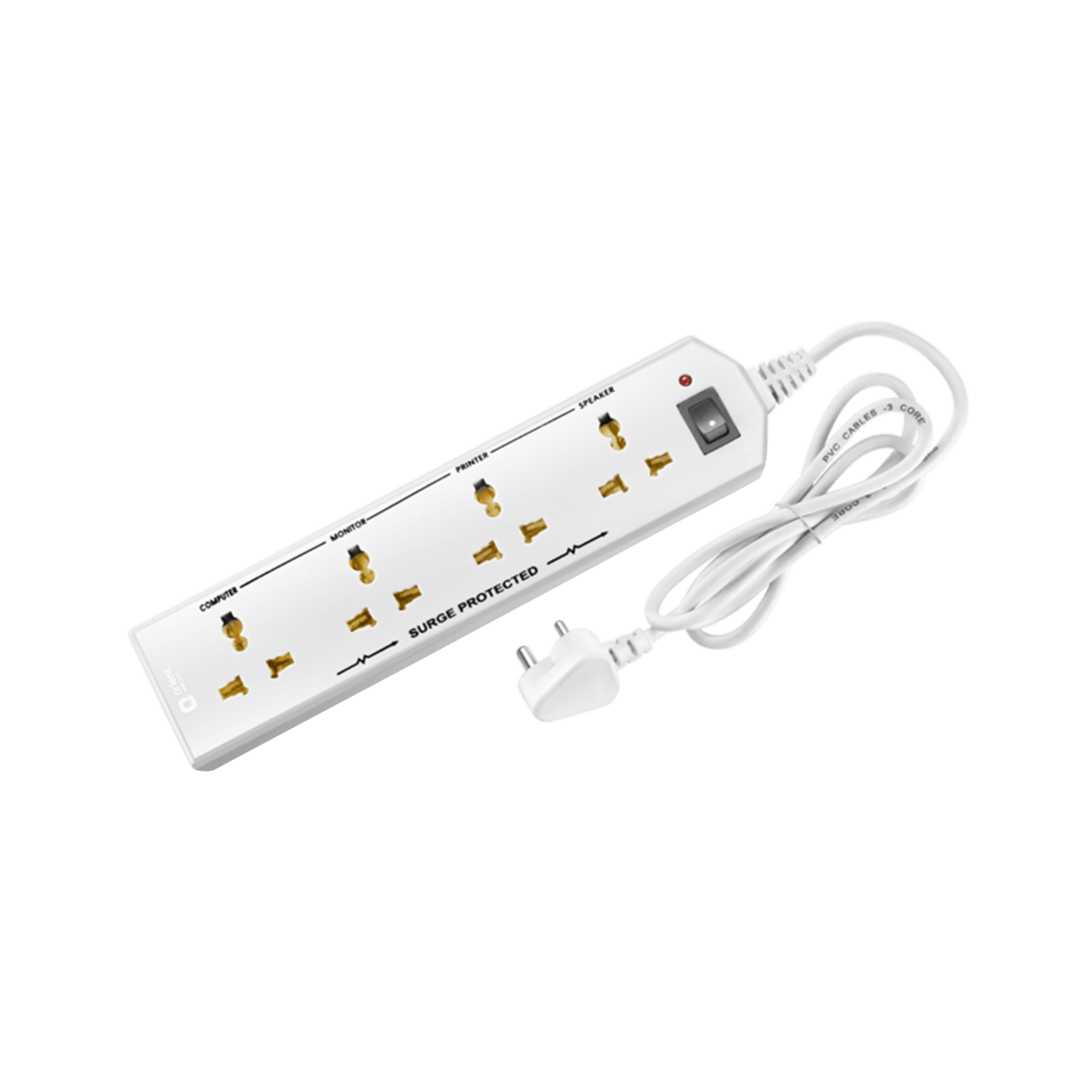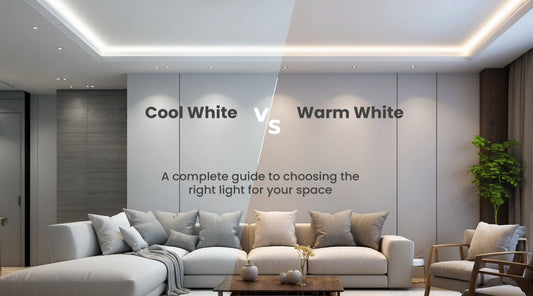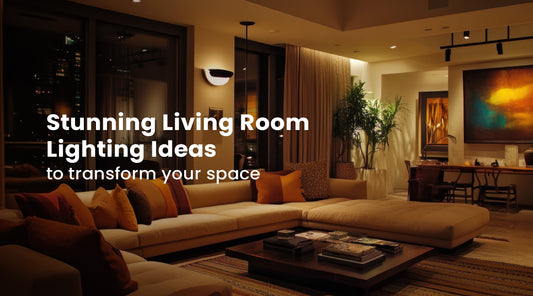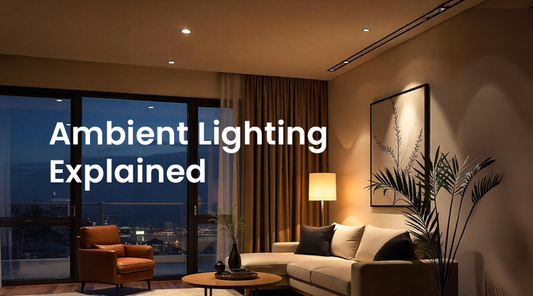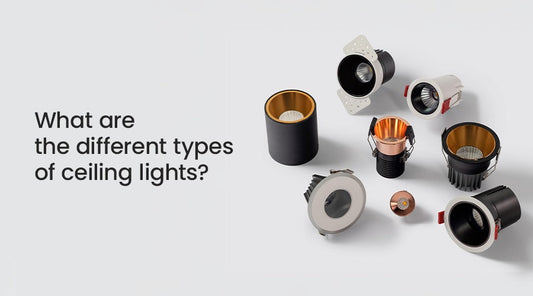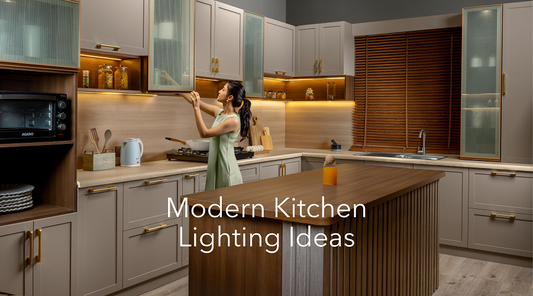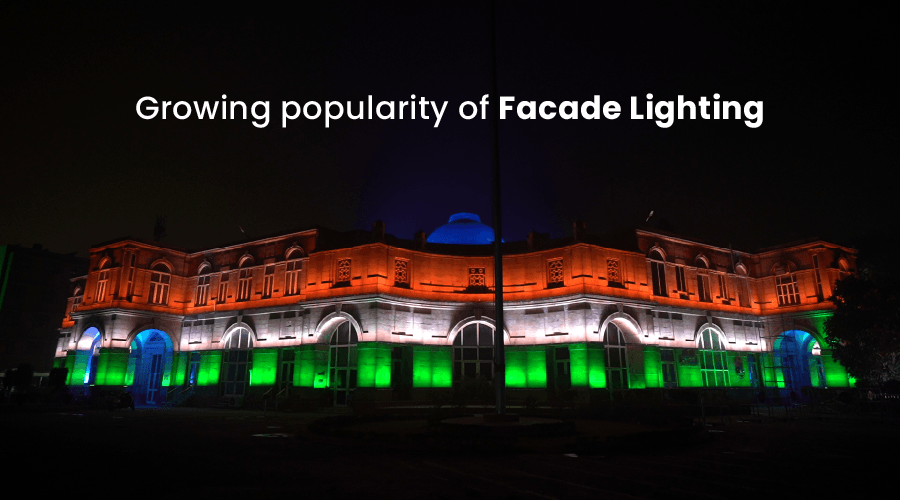
Façade Lighting - Breathing Life into Buildings after Dark

Have you come across a prominent building or landmark recently, illuminated in a mesmerizing array of lights that makes it stand out? Well, that’s the magic of façade lighting. For those who may not know, façade lighting (also known as architectural lighting) is systematic and thoughtful placement of variety of lights on the exterior of buildings and structures. When we say thoughtful, it’s not just about putting up lights – it’s about highlighting the design and architecture of a building, creating a unique ambiance, and at times, about telling a story through visual lighting display. The interplay of light and architecture helps bring buildings to life, transforming them into fascinating and vibrant spaces after dark.
How Facade Lighting Enhances Architecture
Simply imagine a historical building you’ve visited recently. You saw its intricate architecture, where every single detail tells a story of the bygone era, from aged stone and beautiful carvings to magnificent arches. But did you wonder what happens after the sun sets? The magnificent building fades into darkness. This is where façade lighting comes into play, bringing out the architectural aesthetics of the building after dark, in a more captivating way.
Whether it’s a heritage building, a modern skyscraper, or a prominent landmark, facade lighting can transform the structure, accentuating its design and bringing it to life at night. The use of different lights accentuates the architectural features of any structure, such as archways, columns, corners, carvings, rooflines, or even the entire building outline. Façade lighting is gaining so much popularity that it is now making its way into residential buildings. Homeowners and architects are realizing the potential of architectural lighting in enhancing the overall look of the buildings.
Government’s Push for Façade Lighting
As cities expand and evolve, we will see more use of façade lighting in beautifying both residential and commercial buildings. Many state governments and local authorities across the country are now promoting the use of façade lighting, especially for buildings and landmarks of cultural and historical significance. There are three key benefits that make façade lighting a smart choice for buildings. First, façade lighting has the potential to transform cityscapes and turn buildings into stunning visual experiences at night. Secondly, this helps promote night tourism and local economy. Well lit-up landmarks, historical sites, and other city attractions are sure to attract both tourists and locals. Also, these illuminated buildings make an ideal backdrop for nighttime events and shows, further attracting tourists. Many state governments are using Facade lighting to create thematic displays during festivals and special occasions. This indirectly also benefits local businesses like shops and eateries. Thirdly, façade lighting can greatly help in creating safer and more secure spaces for both residents and visitors.
Let’s understand the technology behind façade lighting
One thing we need to understand first is that façade lighting is not as simple as putting up some LED lights. It’s more than that. It’s about customization and using the right lights to get the desired effect. Especially with the use of energy-efficient LEDs, façade lighting allows for a wide range of colour and brightness options. There is the option to program lighting levels, colours, and effects through controllers, making it easy to customise the lighting for any festival or other special occasion. You might have seen iconic buildings around you lit up in the Tricolour on Independence Day or Republic Day. Well, that’s façade lighting for you. Also, the use of smart lighting systems allows for lighting to be controlled remotely and in real time. RGBW technology further enables designers to explore a wide colour palette, helping them achieve visually stunning light displays.
Colour temperature has a key role to play in defining the visual impact of façade lighting. While warm white light (around 3000K) gives a cosy and welcoming feel, cooler light (around 5000K) can be used for creating contrast and vibrancy. Designers can further play with colour-changing LEDs to create dynamic lighting as per the occasion or requirement. An important thing to consider for designers is light pollution which refers to excessive or wrong usage of lights. When installed improperly, the artificial lights can create irritating glare, energy waste, or extreme illumination which can impact the visibility for passerby or disturb the natural environment. Therefore, a key task for the designers is to use the right lighting with right brightness and focus.
To understand what goes into a façade lighting project, let’s take the example of India's longest cable-stayed bridge, Sudarshan Setu, which has been illuminated with combination of Orient Electric’s programmable façade lighting and other decorative lights. For this, we installed 200 decorative poles, each measuring 8.7 meters in height, along the bridge. DMX control-based LED architectural floodlighting was used for dynamic and precise lighting control, enhancing structural elements like pylons and cables.
Since façade lighting is about bringing out the architectural splendour of a structure, our approach to decorative casted poles went beyond functionality in this case, seamlessly integrating with the bridge's architectural elements. We used custom brackets inspired by Lord Krishna's theme elements such as the Flute, Sudarshan Chakra, and Mayur Pankh. The flute design was thoughtfully chosen to reduce torsional force, the Sudarshan Chakra acts as a truss structure, and the Mayur Pankh, featuring gaps, helps reduce wind pressure on the pole. The Circlet decorative Post Top light, symbolizing the religious bond between Dwarika and pilgrims, features a specialized road distribution lens ensuring uniform, glare-free illumination for pedestrians and drivers. So, you see, façade lighting projects require superior technical expertise and architectural design sensibility.
Lightstallations by Orient Electric
We at Orient Electric have illuminated a number of landmark buildings and sites across India. Some of the prominent locations include Rail Bhawan, Baroda House and Travancore House in New Delhi, Varanasi Cantt Railway Station, Rani Kamalapati Railway Station in Bhopal, Ganga Barrage in Kanpur, Bharathi Park in Pondicherry, and Leh Main Gate, Shanti Stupa and the gate of Mahabodhi International Meditation Center in Leh, NHAI Agra, Amritsar Municipal Corporation, and Sudarshan Setu in Gujarat. We refer to these beautifully lit structures as ‘Lightstallations’.
Orient Electric offers a wide range of Façade lighting including LED Linear profiles, Spotlights, Projectors, Uplighters, Underwater lights, Controllers, and other accessories.

